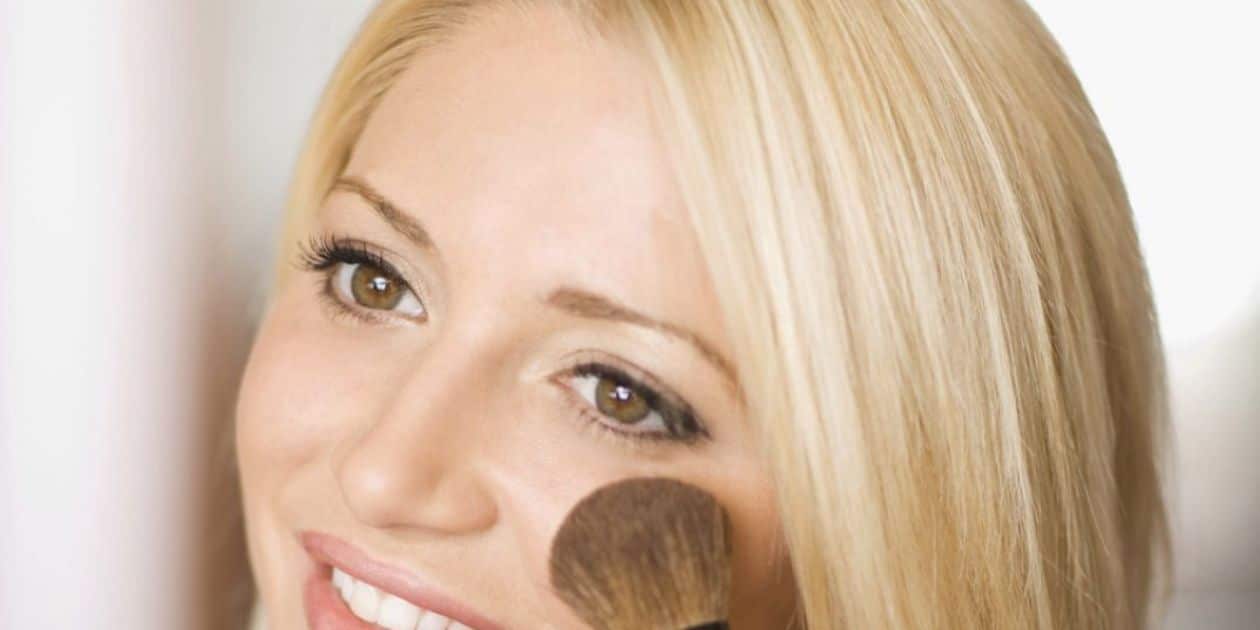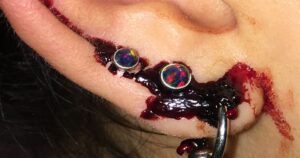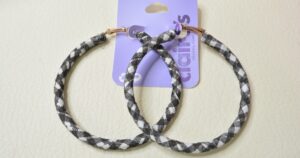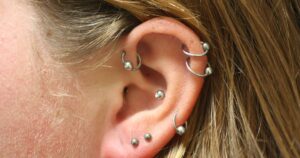Dermaplaning is a quick and easy procedure that can give you smoother skin. It eliminates the top layer of dead skin cells and the vellus hair on the face. The skin appears smoother and lighter as a result.
Your face could feel a little more raw or naked once the vellus hair and layer of dead skin cells have been removed because the skin is now much less covered. With that in mind, you might wonder if you can apply makeup right after dermaplaning. How long after dermaplaning can I wear makeup?
Yes, you can use makeup after dermaplaning to answer your question. But after receiving treatment, you shouldn’t immediately put on makeup.
This post will explore why you should wait to put on makeup immediately following dermaplaning. We’ll also go over the optimum times to wear makeup and what products work best on skin that has just undergone dermaplaning.
How long after dermaplane can I wear makeup?
Your face will feel clean, smooth, and possibly even a little lighter right after treatment, similar to how your head feels after getting a haircut. This is because peach fuzz and dead skin cells are easily removed from the face, freeing it of the debris that clogs pores and suffocates the skin. One session can eliminate two to three weeks’ worth of accumulated dead cells and debris. Moreover, the strokes are so light they resemble massages.
The velvety surface of your face seems ideal for cosmetics when you touch it, which is something we don’t recommend doing much of. But we advise you to hold off for 24–48 hours. Especially if you’ve never had a physical exfoliation procedure, your healthy skin can now breathe. Additionally, everything you put on it will be absorbed because it is a blank canvas. You can apply a foundation layer right away, potentially clogging pores and irritating newly exposed skin cells due to the components in cosmetics.
Fresh Skin
Before continuing, it is essential to understand that dermaplaning involves gliding a surgical blade of medical grade across your face at a 45-degree angle. Peach fuzz removal is the intended outcome. However, doing so also removes the top layer of skin. This is advantageous because exfoliating is frequently the key to flawless skin.
The underlying, healthy cells are forced to the surface when the top layer of the skin is removed. Once more, this is helpful since it gives you a youthful and bright appearance. Dead skin cells produce a variety of issues when they accumulate on your face, including breakouts, a poor complexion, and more apparent lines and wrinkles. Thus, you should learn how to remove dead skin cells. The removal of those cells improves skin health in a variety of ways, with noticeable changes that include:
- A brighter complexion
- An even tone
- A reduction in the appearance of acne scars
- Lessening of lines and wrinkles.
The Makeup Phenomenon
After treatment, makeup will apply on the face like a dream. Consider applying the smoothest, velvetiest primer you can. This outcome is the result of the barriers being removed. Yes, because peach fuzz covers the skin’s surface, it prevents the smooth application of all cosmetics. As a result, your foundation or other cosmetics rest on this downy hair rather than on your skin, making them look matte and cake-like.
Your makeup will apply to your skin like butter without peach fuzz. Additionally, it will lay flat the way you want it to without clinging to dead cell-induced dry skin spots.
Deeper Product Penetration
At least some skincare experts will respond that the path it opens up for deeper product penetration is the top benefit of dermaplaning. You’ve undoubtedly guessed by now that your skin sometimes absorbs the items you use daily. This implies that the benefits of the serums and moisturizers you so diligently use are impossible.
Treatment improves the ability of your skincare products to absorb as it does for your makeup. Hyaluronic acid, vitamin C, and other nutrients you carefully chose can now start to function. This can be as helpful as dermaplaning, demonstrating the potential for a dual-action treatment.
Additional Guidelines
Now that we have covered all aspects of wearing makeup after the treatment, we can give you a few additional recommendations. We’ll start with the days before your appointment. You should wait to wax the treatment area seven days beforehand, and we advise halting any topical medications with components commonly used to treat acne and wrinkles three days prior. Among them are:
- Retinoids and retinol
- Acid glycolic
- Alpha hydroxy acid with salicylic acid
Also, during this period, avoid waxing, bleaching, or tweezing any areas of your face. Avoid the sun, use a gentle, non-comedogenic cleanser, and apply broad-spectrum sunscreen daily.
The Day of and After Treatment
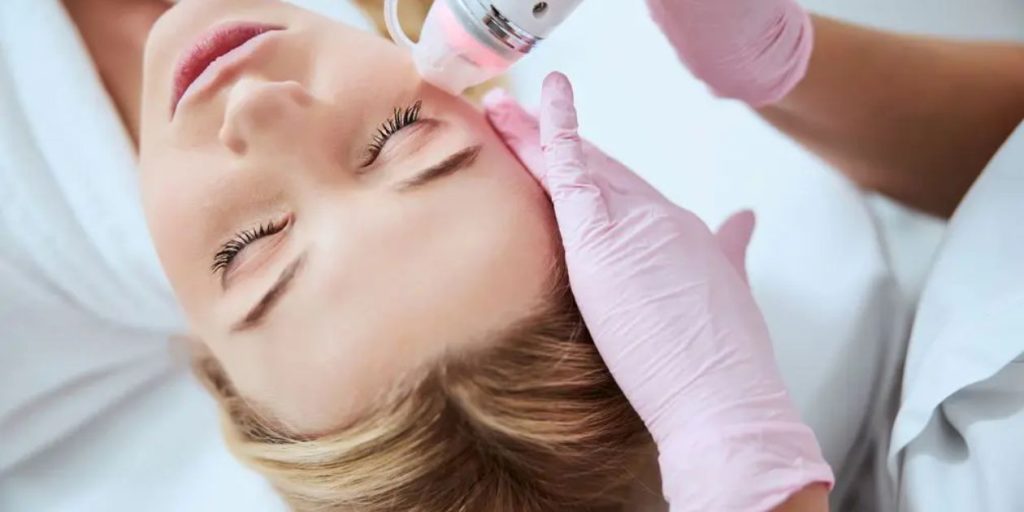
We advise that you wash your face before coming in for your session. No creams, makeup, or other topical products are allowed. You must stop using the majority of topical products right away after treatment and for about 72 hours. You should only use a moderate cleanser, a mild moisturizer, and sunscreen. While you can wear makeup throughout this time, refraining will only enhance your outcomes. Moreover, avoid using scrubs and other exfoliating products and avoid chlorine.
The Benefits of Combining Treatments
We have already covered how to take care of your skin after treatment. Now is a good moment to point out that retinol, vitamin C, and hyaluronic acid-containing products can help you see improvements more quickly. Consider pairing this procedure with a facial, peel, or another non-invasive therapy. Combining treatments can provide advantages like:
- Restored hydration
- Fewer rosacea and acne scars
- Decreased future outbreaks because dermaplaning prepares your skin so well.
- Improved collagen production
- Decreased pigmentation
What You Should Do After Dermaplaning
- Wear Sunscreen
Sunscreen is a daily must if you want to prevent skin cancer. However, since you just had your top layer of skin removed with dermaplaning, this is very crucial. When you remove old skin cells to reveal fresh ones that haven’t been exposed outdoors, your skin is more vulnerable to UV damage.
- Keep Actives away
Avoiding active ingredients means avoiding any powerful skin care treatments. These are AHAs, BHAs, vitamin C, and retinol/retinoids. Because your new skin has just been unveiled, those active substances may irritate, burn, or cause an allergic reaction.
Thus, use moderate skin care products, such as a moisturizer that protects your skin barrier and a gentle cleanser.
- Avoid High Heat Temperatures
You need to stay away from situations with high heat because you want to prevent anything from irritating or inflaming your skin. This includes engaging in any activity resulting in sweating, such as working out, relaxing on the beach, or using saunas or hot showers. By doing this, you can be confident that you’ll recover entirely within the allotted 24-hour period.
- Avoid Exfoliation
You should refrain from any other forms of exfoliation for at least the following 5-7 days after dermaplaning because it just exfoliated your skin. Scrubs, chemical exfoliants, and chemical peels are therefore prohibited. The skin barrier can be damaged by excessive exfoliation, which can also lead to irritation, discoloration, inflammation, and infections.
Conclusion
Dermaplaning is a valuable technique that could enhance the appearance of your makeup on your skin. This is due to the removal of peach fuzz, also known as vellus hair, which can make your makeup appear cakey. That hair will begin to grow back after three to four weeks.
But applying makeup immediately after the operation is not a good idea. When applied to delicate skin, makeup might irritate it. Before applying makeup, the skin needs at least 24 to 48 hours to settle down and heal.
We have addressed the query, “how long after dermaplaning can I wear makeup?” Now, you can understand the tips for taking care of your skin after dermaplaning.
